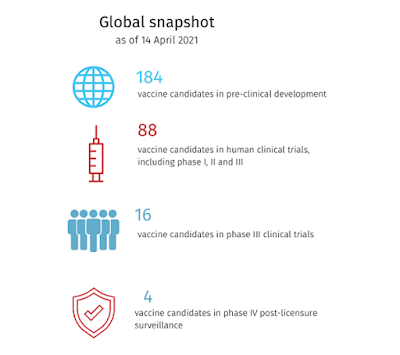The following is a critique of the article "James Hansen's many and varied furphies" by John Happs as published in Quadrant on 26 August 2013 from a Critical Thinking perspective. I will state at the outset that I regard Quadrant to be a reich-wing rag that barely deserves the title "magazine". It is produced as propaganda for extreme right wing political viewpoints and openly states its position as "sceptical of 'unthinking Leftism, or political correctness, and its "smelly little orthodoxies"'. The original article may be found here.
Rather than tackle the issues of climate change, Happs has chosen a time-honored practice of avoiding a discussion of facts and engaging in a smear campaign against a respected scientist.
"Hansen has given numerous public talks about what he sees as an urgent need to reduce greenhouse gas emissions by stopping the mining and burning of coal. He also wants oil exploration stopped, as well as the further exploitation of tar sands."
Without discussing the merits here, the statement is factually incorrect. The impression is given that Hansen is a radical that wants to completely ban oil and gas exploration. Hansen's opposition has very focused at environmentally sensitive areas such as the Amazonian rainforests and Arctic exploration. His similar concerns about the tar sands in Canada are based on the readily available evidence of the damage to the local environment.
Happs is attempting to create a straw-man argument: painting a picture that is simply not realistic, unless of course Happs thinks that anyone who doesn't approve of the obliteration of Amazonian rainforests is a loony radical.
"He unashamedly promotes alarmism about the trivial levels of atmospheric carbon dioxide"
This is the fallacy of "Conclusion entered as evidence".
The way you identify propaganda from a well-argued position is the former starts with the conclusion. The latter reports facts, makes inferences based upon syllogistic arguments which lead to a conclusion. From there it is simply a matter of establishing if the facts are true and if the argument is sound. A sound argument is such that if the facts or true then the conclusion must also be true. A strong (or cogent) argument is such that if the facts are true then the conclusion is probably true.
In this article you see none of these things, as I will demonstrate.
The adjective "unashamedly" is judgemental. It assumes the person has something to be ashamed of.
"Promotes" denigrates the fact that Hansen is an expert (and conversely that Hall isn't).
"Alarmism" is another judgement. Used together we have a fallacy known as a "thought stopping cliche". It means nothing and serves only to create a negative impression.
Also in the same sentence "trivial levels of carbon dioxide". This is "facts not entered into evidence". This hasn't been demonstrated, and in fact, cannot be as this is one of the most provable evidences demonstrating the reality of climate change.
"In 2012 Robert Bryce quoted Hansen in the Dallas News: “The trains carrying coal to power plants are death trains. Coal fired power plants are factories of death.” "
This one is truly brilliant! Notice that he doesn't say that Hansen said this, he says that "Robert Bryce quoted Hansen". Interesting! Why did he do this rather than simply quote Hansen and provide a reference?
The original words were written in this article from the Guardian. Of course, if Happs had referred to the original article - and someone checked it out - they might actually read him in context:
"The trains carrying coal to power plants are death trains. Coal-fired power plants are factories of death. When I testified against the proposed Kingsnorth power plant, I estimated that in its lifetime it would be responsible for the extermination of about 400 species - its proportionate contribution to the number that would be committed to extinction if carbon dioxide rose another 100 ppm."
Puts that a little more in perspective here, doesn't it? Read the full article here to see how it all fits in contextually.
Again, the purpose here is to smear Hansen and make him look like an activist first and a scientist second - leading us up to the fallacious sucker punch of them all:
"Hansen sees himself as an activist and a scientist, but he can’t be both and remain credible."
This of course, is a ridiculous statement. History is full of activists that were professionals in their field. In fact, most of them are activists precisely because they know they are talking about. According to Happs, a "good" scientist is not allowed to have an opinion. "Good" scientists stay in their boxes and report their findings to their vastly more intelligent "masters" who are permitted to have opinions.
"Any scientist with a pet hypothesis who selects only data which support that hypothesis, whilst ignoring conflicting data, must lose the respect of their scientific colleagues."
Happs is assuming here that any scientist with an opinion cannot be objective and will of course commit scientific fraud. Happs offers no evidence that Hansen has EVER done this, he is simply saying it is ipso facto. In other words, Hansen's scientific results are a direct result of his prejudiced opinions rather than the other way around. Presumably as well, Happs places all climate scientists in this box, as almost to a person, they agree with Hansen's results.
"Real science actually looks for refutation whereas pseudoscience is intolerant of dissent."
Well, yes, this true. However the pseudoscience is with the deniers. That's because the "scientists" say that climate change is real. The deniers are not scientists and therefore - by definition - "pseudoscientists", and Happs is one of them.
The article is quite long and continues to cherry-pick results and apply statements that were never intended to be applied to those statements. Happs is not looking at the holistic science, he is picking and choosing and committing every single sin he subscribes to Hansen: He isn't looking for facts, he is starting from his prejudiced conclusion and working backwards from there. This is called "conclusion shopping".
This article is an A1 demonstration of yellow journalism in action. Happs' dishonest portrayal of Hansen and the science of Climate Change is staggering in its tenacious mendacity. Godwin's Law precludes me from making the obvious comparisons that scream from the pages of Quadrant. I'd say that the article was a discredit to the journal it was published in, but that would only serve to elevate Quadrant to a level it doesn't deserve.









